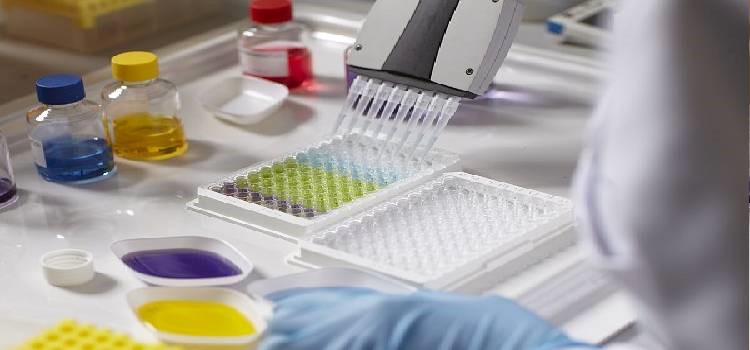
Drug Delivery Devices Market by Route of Administration (Oral Drug Delivery, Injectable Drug Delivery, Topical Drug Delivery, Ocular Drug Delivery, Pulmonary Drug Delivery, Nasal Drug Delivery, Transmucosal Drug Delivery, Implantable Drug Delivery, and Others), by Applications (Infectious Diseases, Cancer, Autoimmune Diseases, Central Nervous System Disorders, Respiratory Diseases, Diabetes, and Other Application), and by End User (Hospitals, Ambulatory Surgery Centers, Home Care Settings, Diagnostic Centers, and Other End User) – Global Opportunity Analysis and Industry Forecast 2024-2030
Market Definition
The Drug Delivery Devices Market was valued at USD 147.17 billion in 2023 and is predicted to reach USD 236.63 billion by 2030 with a CAGR of 7.0% from 2024-2030.
Drug delivery devices are specialized tools intended to administer drugs or chemical substances to the desired organ with maximum safety and reliability in human bodies for the treatment of diseases. They are equipped with sensors, adherence trackers, dose reminders, and monitoring systems which uplifts the benefits of the drug delivery devices.
These devices play a crucial role in delivering medications in a targeted and controlled manner, enhancing treatment efficacy, patient convenience, and overall healthcare outcomes. The market includes a diverse range of devices such as inhalers, injectors, pumps, and other innovative tools designed to facilitate the precise and efficient delivery of pharmaceuticals. The continuous evolution of drug delivery devices reflects advancements in technology, materials, and design aimed at improving patient adherence, minimizing side effects, and contributing to the overall progress of healthcare delivery.
Market Dynamics and Trends
Increasing chronic diseases such as heart disease, cancer, and diabetes uplifted the demand for drug delivery devices in healthcare industries. Drug delivery devices mitigate chronic diseases by optimizing medication administration, which results in improved management of chronic conditions and contributes to the growth of the drug delivery market.
According to the World Health Organization, in September 2023 cardiovascular illnesses account for the majority of chronic disease mortality 17.9 million per year, followed by malignancies 9.3 million, chronic respiratory diseases 4.1 million, and diabetes 2.0 million, including diabetes-related kidney disease deaths.
Moreover, the advancement in the design of drug delivery devices aims to enhance efficiency that plays a pivotal role in shaping the drug delivery devices market. The demand for these innovative devices influences manufacturers to consistently introduce new and advanced devices. These devices are designed to provide improved precision, user-friendliness, and features centered around the needs of patients.
For instance, in September 2022, Becton, Dickinson, and Company introduced a next-generation glass vaccine Pre – Filled Syringe (PFS) which sets new and higher performance benchmarks for vaccination. Thus, it fastens the administration of vaccines, supports dose sparing, and reduces vaccine wastage enhancing the efficiency of drug delivery mechanisms.
However, the increasing risk of needlestick injuries can lead to serious or fatal infections such as hepatitis B virus, hepatitis C virus, or HIV. This factor is expected to restrain the growth of the drug delivery device market. On the contrary, the introduction of eco-friendly drug delivery devices made of polycarbonates that can be recycled even after contact with biohazardous materials is expected to create significant opportunities for market growth in the future.
Market Segmentations and Scope of the Study
The drug delivery devices are segmented on the basis of route of administration, application, and end user. On the basis of route of administration, the market is segmented into oral drug delivery, injectable drug delivery, topical drug delivery, ocular drug delivery, pulmonary drug delivery, nasal drug delivery, transmucosal drug delivery, implantable drug delivery, and others. On the basis of application, the market is categorized into infectious diseases, cancer, autoimmune diseases, central nervous system disorders, respiratory diseases, diabetes, and other application. On the basis of end users, the market is segmented into hospitals, ambulatory surgery centers, home care settings, diagnostic centers, and other end user. The regional breakdown includes North America, Europe, Asia-Pacific, and Rest of World (RoW).
Geographical Analysis
North America region holds the largest share of the drug delivery market and is expected to continue dominating the market during the forecast period. The rising prevalence of cancer in countries such as the U.S. and Canada underscores the escalating demand for advanced and efficient drug delivery devices in the healthcare market.
This surge in cancer cases is driving the need for innovative solutions including implantable infusion devices, infusion pumps and others which is contributing significantly to the expansion of the market. According to the National Library of Medicine, there is approximately 2,370,000 new cancer cases and 640,000 cancer deaths in the U.S. in 2022. Thus, this is expected to create significant growth in the drug delivery devices market in the region.
Additionally, the technological advances in drug delivery devices that enhanced precision, promote patient adherence, and ensured safety during therapeutic drug administration propelled growth in the drug delivery market of this region.
For instance, in February 2023, Biocorp's Mallya, a smart medical device, seamlessly connects insulin pens, simplifying self-monitoring of insulin doses. This innovative technology reduces medical errors, enhancing drug administration in hospitals, clinics, and beyond, contributing to the growth of the drug delivery device market.
On the other hand, Europe is expected to show a steady rise in the drug delivery devices market owing to the presence of various companies such as Biogen, Alcyone Therapeutics, and others that are adopting strategies to increase their market presence over the region further propel the growth of the market.
For instance, in January 2023, Biogen collaborated with Alcyone Therapeutics and developed an implantable medical device Alcyone’s ThecaFlex DRx System. This innovative device is designed for the subcutaneous delivery of antisense oligonucleotide (ASO) therapies into the intrathecal space, with the goal of enhancing patient experience and facilitating convenient access to neurological ASO treatments.
Competitive Landscape
Various market players operating in drug delivery are West Pharmaceutical Services, Corning Incorporated, Bayer AG, Cipla Ltd, F. Hoffmann-La Roche Ltd., GlaxoSmithKline Plc, Johnson and Johnson, Novartis AG, Pfizer Inc., Sanofi, and others. These companies are adopting various strategies such as product launches, collaboration, and others to enhance their dominance over the global drug delivery device market.
For instance, in November 2022, Cipla, introduced Leuprolide Acetate Injection Depot 22.5mg that is used to treat advanced prostate cancer. It comes as a three-month depot injection and the kit includes a prefilled syringe with a 2mL 0.8% mannitol solution and an easily administered MIXJECT transfer device for single-dose injection.
Also, in January 2022, West Pharmaceutical Services, Inc. collaborated with Corning Incorporated to enable advanced injectable drug packaging and drug delivery systems. Its main objective is to advance patient’s safety and improve life-saving treatment which is driving the market towards the growth.
Key Benefits
-
The drug delivery devices market report provides the quantitative analysis of the current market and estimations through 2024-2030 that assists in identifying the prevailing market opportunities to capitalize on.
-
The study comprises a deep dive analysis of the drug delivery devices market trend including the current and future trends for depicting the prevalent investment pockets in the market.
-
The information related to key drivers, restraints and opportunities and their impact on the drug delivery devices market is provided in the report.
-
The competitive analysis of the market players along with their market share in the drug delivery devices market
-
The SWOT analysis and Porters Five Forces model is elaborated in the study.
-
Value chain analysis in the market study provides a clear picture of the stakeholders’ roles.
Key Market Segments
By Route of Administration
-
Oral Drug Delivery
-
Injectable Drug Delivery
-
Topical Drug Delivery
-
Ocular Drug Delivery
-
Pulmonary Drug Delivery
-
Nasal Drug Delivery
-
Transmucosal Drug Delivery
-
Implantable Drug Delivery
-
Others
By Application
-
Infectious diseases
-
Cancer
-
Autoimmune diseases
-
Central nervous system disorders
-
Respiratory diseases
-
Diabetes
-
Other Application
By End User
-
Hospitals
-
Ambulatory surgery centers
-
Home care settings
-
Diagnostic centers
-
Other End User
By Region
-
North America
-
The U.S.
-
Canada
-
Mexico
-
-
Europe
-
The UK
-
Germany
-
France
-
Italy
-
Spain
-
Denmark
-
Netherlands
-
Finland
-
Sweden
-
Norway
-
Russia
-
Rest of Europe
-
-
Asia-Pacific
-
China
-
Japan
-
India
-
South Korea
-
Australia
-
Indonesia
-
Singapore
-
Taiwan
-
Thailand
-
Rest of Asia-Pacific
-
-
Rest of World
-
Latin America
-
Middle East
-
Africa
-
REPORT SCOPE AND SEGMENTATION:
|
Parameters |
Details |
|
Market Size in 2023 |
USD 147.17 Billion |
|
Revenue Forecast in 2030 |
USD 236.63 Billion |
|
Growth Rate |
CAGR of 7.0% from 2024 to 2030 |
|
Analysis Period |
2023–2030 |
|
Base Year Considered |
2023 |
|
Forecast Period |
2024–2030 |
|
Market Size Estimation |
Billion (USD) |
|
Growth Factors |
|
|
Countries Covered |
28 |
|
Companies Profiled |
10 |
|
Market Share |
Available for 10 companies |
|
Customization Scope |
Free customization (equivalent up to 80 working hours of analysts) after purchase. Addition or alteration to country, regional, and segment scope. |
|
Pricing and Purchase Options |
Avail customized purchase options to meet your exact research needs. |
KEY PLAYERS
-
West Pharmaceutical Services
-
Corning Incorporated
-
Bayer AG
-
Cipla Ltd.
-
F. Hoffmann-La Roche AG
-
GlaxoSmithKline Plc
-
Johnson & Johnson
-
Novartis AG
-
Pfizer Inc.
-
Sanofi




 Speak to Our Analyst
Speak to Our Analyst


































